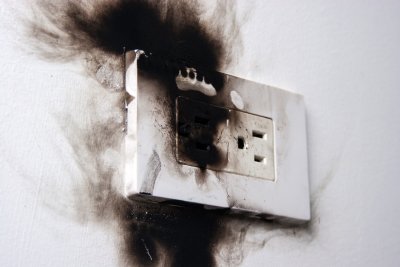As a homeowner, you want to make your home as safe as possible for yourself and your family. As you look around your home, you might assume that you’ve already achieved maximum safety. However, one of the greatest potential risks is out of sight: the electrical system behind your walls. Fortunately, maximizing the safety of your electrical system is as easy as calling an electrician in San Jose . If you haven’t already, you should have a professional install arc fault circuit interrupters (AFCI) throughout your electrical system. 
Arc Fault Basics
Under normal circumstances, electricity should travel safely throughout your home via electrical wires, or conductors. An arc fault occurs when electricity travels outside of safe conductors. A big enough arc could ignite insulation or another flammable part of your home, contributing to a disastrous electrical fire; in fact, arc faults are among the leading causes of electrical fires in this country. The older the wiring, the higher the risk of arc faults.
How AFCI Breakers Work
An arc fault circuit interrupter is designed to detect a dangerous electrical arc and promptly interrupt the circuit before a fire can ignite. When an arc fault occurs, it creates a sharp spike and drop that is easily detectible by an AFCI breaker. However, an AFCI breaker is sophisticated enough to tell the difference between a safe, normal arc and a potentially harmful arc fault.
Why They’re Important
Traditional circuit breakers are also important for electrical safety, but they alone cannot protect from electrical fires. A circuit breaker will only interrupt a circuit in the event of a short circuit or overload, and cannot detect an arc fault. AFCI breakers are so important that the U.S. electrical code now requires them in most newly constructed dwelling units. If your home has old wiring and does not yet have AFCI breakers, consider speaking with an electrician in San Jose. AFCI breakers are generally inexpensive and easy to install.


